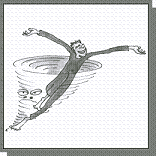6 Tips to Treat and Manage Depression
 In a previous post, we looked at the cognitive behavioural therapy (CBT) model of the vicious cycle of depression involving thoughts, feelings, behaviours, memories and physical symptoms. One of the first steps in overcoming depression is to put and end to this vicious cycle, and gain some momentum that can help you cycle in a positive direction.
In a previous post, we looked at the cognitive behavioural therapy (CBT) model of the vicious cycle of depression involving thoughts, feelings, behaviours, memories and physical symptoms. One of the first steps in overcoming depression is to put and end to this vicious cycle, and gain some momentum that can help you cycle in a positive direction.
Just as automatic negative thoughts result from and contribute to depression, by engaging in more neutral and balanced ways of thinking, we can begin to stop the vicious cycle involving negative thoughts and depression. Cognitive therapy provides an effective tool to help break out of negative patterns of thinking. As our thoughts become less negative, we begin to feel less depressed, and as we become less depressed, our thoughts about ourselves, our lives and our future become less negative, and so on.
We can experience similar reversal in these vicious cycles in other areas of our lives that are affected by, and affect depression. Cognitive behavioural therapy (CBT) can help change behaviours that result from and contribute to depression such as reducing level of activity and withdrawing socially. Changes in diet, exercise, sleep habits and self-care can help alleviate the distressing physical symptoms associated with depression and lead to more energy and motivation.

 Emotion regulation is a core dialectical behavior therapy (BDT) skill. In some earlier posts about emotion regulation we learned that the ways in which we often try to deal with emotions—such as trying to
Emotion regulation is a core dialectical behavior therapy (BDT) skill. In some earlier posts about emotion regulation we learned that the ways in which we often try to deal with emotions—such as trying to  It’s easy to get swept away by our thoughts, especially in the face of strong emotions. We get stuck ruminating and dwelling about the past, filled with guilt or regret. Or our minds start racing and we can’t stop worrying about the future and imagining all the things that could go wrong. Or we replay conversations over and over again in our heads, trying to make sense of them or figure out what we could have said differently.
It’s easy to get swept away by our thoughts, especially in the face of strong emotions. We get stuck ruminating and dwelling about the past, filled with guilt or regret. Or our minds start racing and we can’t stop worrying about the future and imagining all the things that could go wrong. Or we replay conversations over and over again in our heads, trying to make sense of them or figure out what we could have said differently.
